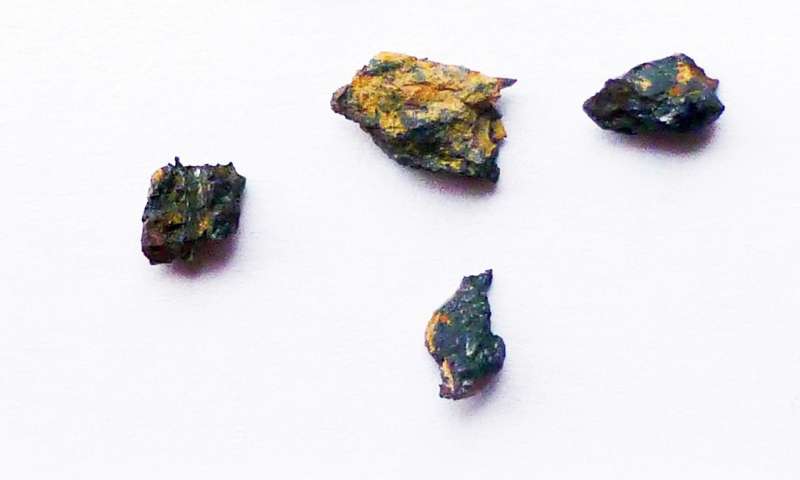
South-West Egyptian rock could be a breakthrough to understand our solar system
The Sahara desert is filled with a yellow colored unique stone which has been termed by the scientists as the Hypatia Stone. This particular stone was discovered by the scientists in the year 1996 which later turned out to have some extraterrestrial origin story. The stone is made up of material that is unknown to us from any sample of comet or meteor available.
Further, the in-depth analysis of the molecular composition of the stone has provided evidence that could predate the stone before the formation of our solar system.
The scientists announced the stone’s extraterrestrial origin in the year 2013 by analysis of the sample obtained from the Libyan Desert Glass Field. The stone derives its name from Hypatia of Alexandria who was an ancient astronomer. After the initial discovery of the stone, the researchers estimated that this diamond-rich Hypatia stone derived unique origins unknown to mankind.
The findings of the study conducted on this extraterrestrial stone have been published in the Geochimica et Cosmochimica Acta. Researchers from the University of Johannesburg conducted an in-depth analysis of the stone which provided evidence for lack of minerals like silica. The lack of this important element makes the Hypatia stone a peculiar one.
Jan Kramers, lead researcher, and professor from the University of Johannesburg explained the uniqueness of the stone as he said, “The non-metallic and chondritic meteorites show a similar composition to the materials found all over the Earth if ground into the form of dust. However, the Hypatia stone carries a humongous percentage of carbon with a negligible amount of silicon. Normally, Earth or any recognizable meteor or comet has a higher percentage of silicon with a lower amount of carbon. “
The stone is comprised of a peculiar carbon compound which is known as polyaromatic hydrocarbons. These compounds have been linked with an existence predating our solar system. The PAH compounds are only present in interstellar dust, meteors or comets that have been exposed to a prolonged period of heat in the space.
The strangest feature housed by the stone is the presence of a pure variety of metallic aluminum that is a rare possibility in our solar system. Apart from this, the stone also contains rare compounds such as silver iodine phosphide, a compound composed of nickel and phosphorus with a small amount of iron along with moissanite grains.
All in all, the stone lacks silicate minerals along with the presence of extremely rare compounds which suggest that the Hypatia stone existed way before our solar system. This shatters the entire theory of the formation of our solar system which was constructed from the idea of a homogenous cloud consisting of interstellar dust. It was assumed that this dust was similar during the formation of all the solar systems present in our galaxy or beyond.
However, the chemical composition of this stone negates the very idea of similar interstellar dust stating that the dust was different in various corners of the never-ending space. To derive the origin of Hypatia, researchers need to study the stone in comparison with all the samples of interstellar objects available. As of now, it is evident that the stone comes from a cold environment where temperatures fall well below the point at which nitrogen turns to the liquid state. This proves that the stone comes from a place beyond Kuiper Belt.
Earth has seen comets from places as far as the Kuiper Belt, past Neptune’s orbit or even beyond. Some of them belong to the Oort Cloud which houses space objects with unknown chemical composition.


